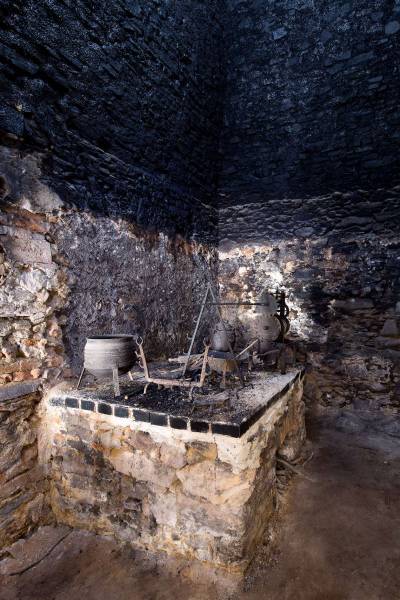Inequality Reflected in Institutionalized Food Supplies for the Poor in the Late Middle Ages and Early Modern Period.

In medieval and early modern welfare institutions, spiritual and bodily “nourishment” numbered among their most important tasks alongside the provision of accommodation. These institutions, which were often called hospitals, were mostly multifunctional (old age homes, orphanages, institutions for the disabled, etc.), but only in the fewest cases were they already oriented towards caring for the sick. Alongside hospitals founded by monasteries and religious orders, many cities and market towns witnessed the emergence of “civic hospitals” from the middle of the thirteenth century onwards, which generally provided sustenance for impoverished citizens, as well as infirmaries for people with infectious diseases, especially leprosy. From the sixteenth century onward, this latter type of infirmary also served the poor.
Another type of institution was the manorial hospital for impoverished subjects. The sub-project “Breadcrumbs for the Poor?” examines the nutritional situation in such institutions from the fourteenth through the seventeenth centuries in what was then Austria below the Enns – today Lower Austria with the capital city Vienna. Aside from the sources relating to such institutions, there are hardly any written sources, physical legacies, or material objects (“things” in the widest sense) surviving for the study of the poor that furnish insights into their nutrition. While the nutritional situation in early modern welfare institutions has been at least rudimentarily researched, this project, due to its chronological focus beginning in the Middle Ages, enters new research territory. The medieval and early modern hospital landscape in what is today Lower Austria has generally hardly been researched, as a result of which the appertaining nutritional situation remains to a great extent unknown.
This project will focus comparatively on two or three institutions with a solid source basis, selected from the over 100 institutions the existence of which has been provable to date.On the basis of the available source materials, the project will focus on various questions relating to social, economic, cultural, environmental and architectural history as well as to archaeology and art history. What resources were available to these hospitals to provide sustenance for their patients? What was produced on site, what was purchased? What was eaten at which time, in which quantity, by whom, and under which circumstances? Who was responsible for the acquisition or production of foodstuffs as well as their preparation? What were the spatial circumstances and material furnishings like? However, the “voices” of those being cared for in relation to their nutritional situation will – aside from a few hoped for coincidental findings – hardly be reconstructable on the basis of the sources prior to the seventeenth century.

"Rauchküche" of the former civic hospital of Eggenburg (Foto: Peter Böttcher)
Sarah Pichlkastner, Ingrid Matschinegg, Zwischen gesicherter Nahrung und gar zu klain gemachten knedeln: Die Ernährungssituation in Fürsorgeeinrichtungen im (Erz-)Herzogtum Österreich unter der Enns vom 14. bis zum 17. Jahrhundert – eine Projektskizze. In: Medium Aevum Quotidianum 73 (2016), 56 – 87.
Sarah Pichlkastner, Bier, Wein, Kapitalien – aber Insassinnen und Insassen? Das Wiener Bürgerspital zwischen wirtschaftlichem „Großunternehmen“ und karitativer Versorgungseinrichtung in der Frühen Neuzeit. In: Historia Hospitalium 30 (2017), 305–318.
Sarah Pichlkastner, Beer, Cereals, Credit Business, Subject, Wine – but Inmates? Searching for Inmates in the Archival Sources of the Early Modern Viennese Civic Hospital. In: Historia Hospitalium 30 (2017), 189–193.
Sarah Pichlkastner, Ernährung und soziale Ungleichheit in einem ‚besonderen‘ Haus. Die Food Links des Klosterneuburger Bürgerspitals in der zweiten Hälfte des 16. Jahrhunderts In: Object Links – Dinge in Beziehung, hg. vom Institut für Realienkunde des Mittelalters und der frühen Neuzeit (Formate. Forschungen zur materiellen Kultur 1), Wien 2019, S. 127–154.
Sarah Pichlkastner, Healthy Food in Hospitals? The Diet of Inmates in Early Modern Welfare Institutions in Vienna and Lower Austria, in: Historia Hospitalium 32 (2019) [im Druck].
Sarah Pichlkaster, Spitäler und Ernährungssicherheit (food security) in Spätmittelalter und Früher Neuzeit. Eine exemplarische Untersuchung zu kommunalen Fürsorgeinstitutionen im heutigen Niederösterreich, in: Österreichische Zeitschrift für Geschichtswissenschaften 2 (2019) [im Druck].